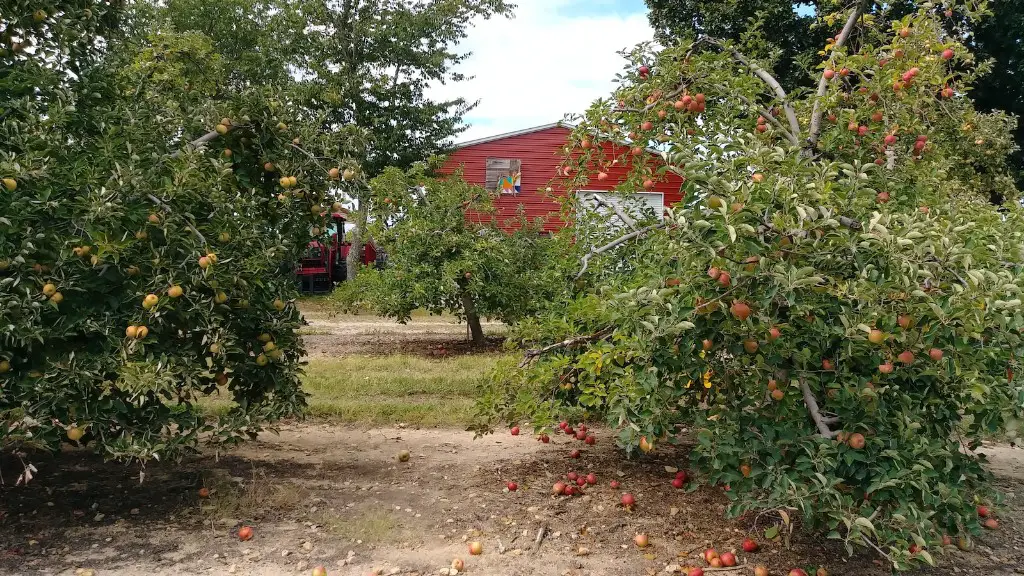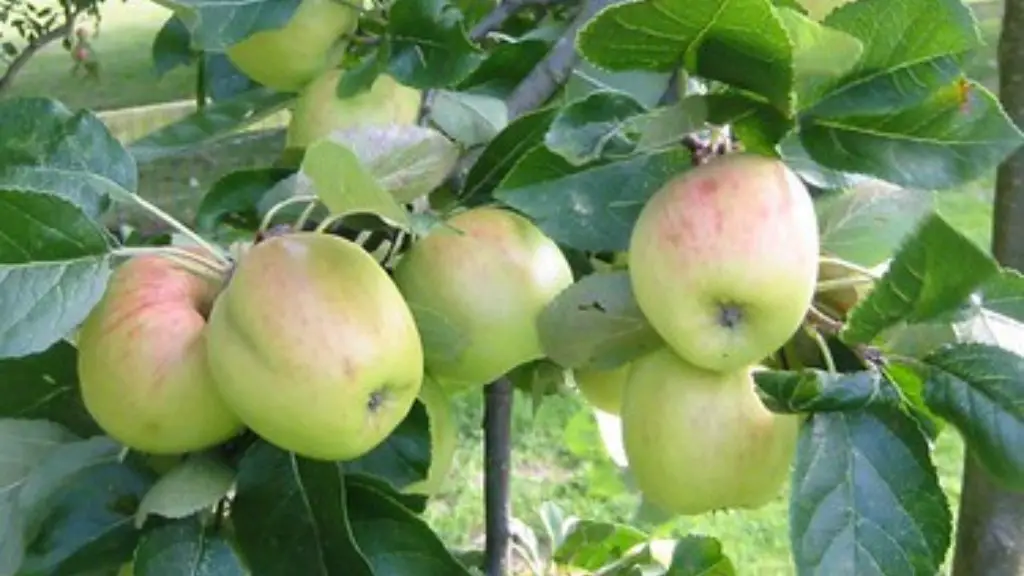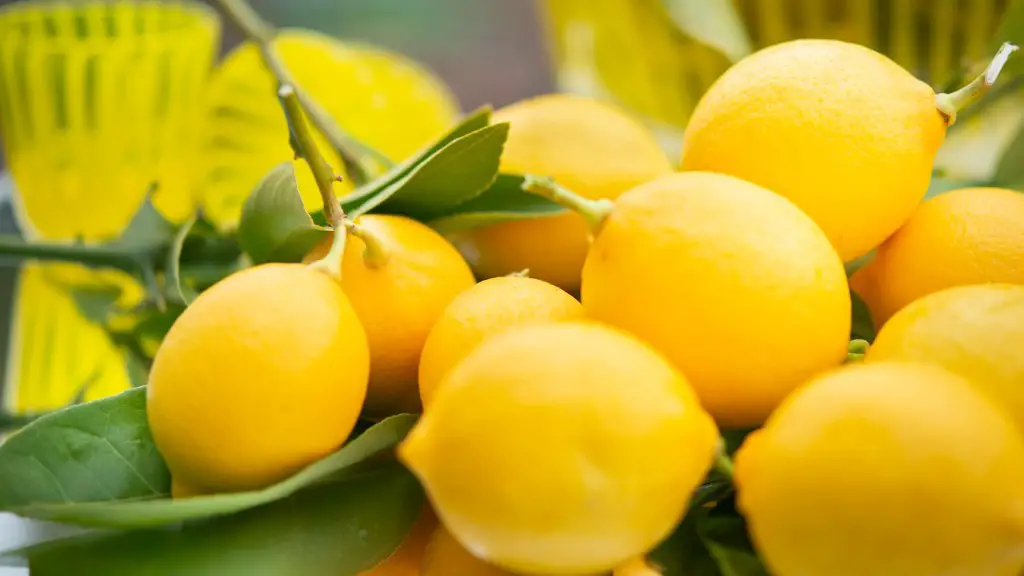Apples are one of the most popular fruits in the world. But why do apple tree leaves turn yellow? To answer this question, we need to take a closer look at the science behind the phenomenon.
When apple leaves turn yellow, it is often due to the presence of chlorophyll. Chlorophyll is essential for photosynthesis, and it gives the leaves their characteristic green color. When there is a lack of nitrogen in the soil, chlorophyll production slows down, and the leaves start to lose their green color and turn yellow.
Another common reason for yellowing leaves is drought. Because apple trees need plenty of water, a lack of water can cause the leaves to turn yellow. If the tree is overwatered, the leaves may also turn yellow due to an excess of water.
In some cases, yellowing leaves can be caused by pests or diseases. Certain pests and diseases can cause leaves to turn yellow and ultimately cause the tree to die. It’s important to keep an eye out for any signs of pests or disease and to take action quickly if symptoms appear.
Finally, yellowing leaves can be a sign of old age. If a tree is more than 10 years old, its leaves may start to turn yellow due to the natural aging process. If you have an old apple tree, it may turn yellow even if it is getting enough water, nutrients, and sunlight.
Environmental Causes of Yellow Apple Tree Leaves
Environmental influences are one of the most common causes of yellow apple tree leaves. These include a lack of sunlight, a lack of water, and soil that isn’t providing enough nutrients. Sunlight and water are particularly important for the health of apple trees. If the tree is growing in an area that isn’t getting enough sunlight or water, the leaves will start to turn yellow.
In terms of soil health, it’s important to make sure the soil is providing the right balance of nutrients. If the soil is too acidic or alkaline, it won’t be able to provide enough of the essential minerals that the tree needs to grow. Additionally, if the soil has an excess of pesticides or other contaminants, it may cause the leaves to yellow or even discolor.
Seasonal Causes of Yellow Apple Tree Leaves
In some cases, yellow apple tree leaves can be due to seasonal changes. For example, during the fall, when days become shorter, there might not be enough light for the tree to produce chlorophyll. This can cause the leaves to turn yellow as a result of the decrease in sunlight. Additionally, cold temperatures and frost may cause the leaves to yellow as they become stressed.
In contrast, during the summer months, the leaves may yellow due to the heat of the sun. When temperatures become too hot, the leaves may become stressed, and their chlorophyll production can slow down, causing them to turn yellow. In these cases, it is important to provide the tree with plenty of water and make sure that it is shaded from direct sunlight.
Chemical Causes of Yellow Apple Tree Leaves
When leaves turn yellow, it is not always due to environmental or seasonal factors. In some cases, it may be due to a buildup of chemical compounds in the soil. When certain chemical compounds, such as nitrates and ammonium, accumulate in the soil, they can create an imbalance that results in the yellowing of apple tree leaves. When fertilizers are overused or improperly applied, these compounds can accumulate and may cause the leaves to yellow.
In these cases, it is important to adjust the amount or type of fertilizer that is being used to make sure that the soil is receiving the right balance of nutrients. Additionally, it may be helpful to monitor the pH level of the soil to make sure it is in the right range.
Nutritional Causes of Yellow Apple Tree Leaves
Nutritional deficiencies are another common cause of yellow leaves in apple trees. If the tree isn’t receiving enough of certain essential nutrients, such as nitrogen and iron, it can cause the leaves to yellow. Iron deficiencies are particularly common in apple trees and can cause the leaves to turn yellow.
In these cases, it is important to make sure the tree is receiving enough nutrients. Fertilizers or manure can be added to the soil to help boost the nutrient levels. Additionally, it may be helpful to check the soil’s pH levels and make sure that it is within an optimal range for nutrient uptake.
Insect and Disease Causes of Yellow Apple Tree Leaves
Insects and diseases can also cause the leaves of apple trees to turn yellow. If a tree is infested by certain types of insects, such as aphids or scale, the leaves may become yellow as a result of the pests feeding on the tree’s nutrients. Additionally, certain diseases can cause yellowing leaves, such as apple scab or canker. These diseases can be difficult to treat and can ultimately kill the tree if they are not addressed.
When it comes to insects and diseases, it’s important to act quickly if you spot any symptoms. Various types of pesticides and fungicides can be used to help control the pests or diseases, but it is important to consult with a professional before taking any action. If an infestation or disease is left untreated, it can cause serious damage to the tree.



